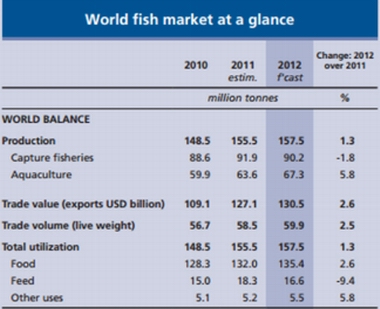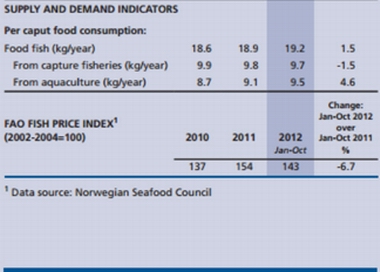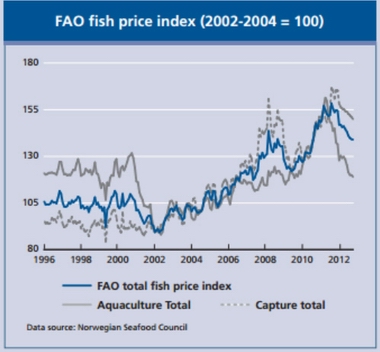The price dip was the result of a reduced consumer demand, the effect of which was contained in the captured fish sector by a downsizing of production.
These tendencies were refiected in the FAO fish price index, which shows international fish prices sliding by almost seven per cent in the first ten months of the year compared with the same period in 2011.
World production of fish is forecast to rise by 1.3 per cent to 157.5 million tonnes in 2012, less than half the five per cent expansion rate registered in 2011. The increase this year would be entirely due to aquaculture, while supplies from capture fisheries may decline somewhat, as rising fuel costs and difficulty to pass them down to customers limit the activity of the fishery fieet.
International trade in fish and fishery products is foreseen to expand by 2.5 per cent to 59.9 million tonnes, live weight, as importers are expected to take advantage of falling prices to step up purchases.
However, demand by the EU, the world’s largest fish import market, has been weak due to economic downturns in some southern European markets.
World fish consumption as food is now anticipated to increase by 2.6 per cent in the course of the year, prompting a 1.5 per cent gain in per capita food consumption to 19.2 kg per year. All of the increase would correspond to aquaculture fish, as intake of wild fish is expected to decline somewhat, consistent with the changes in the relative prices.








